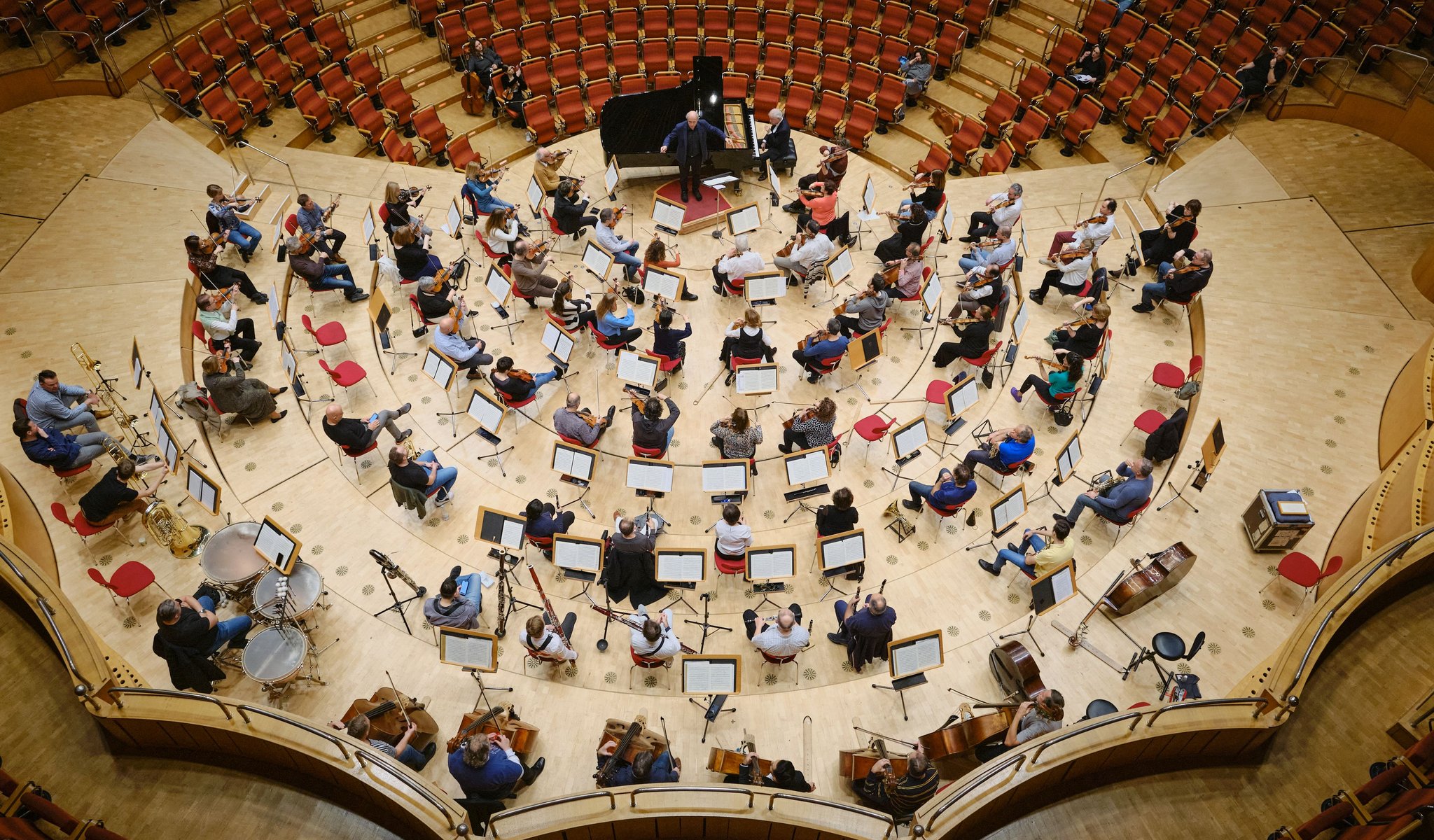
Program
Featuring
Other information
The event is about 2.5 hours long.
About the event
Mendelssohn's world-famous violin concerto and the music of a monumental ballet will be performed at the Budapest Festival Orchestra's concert. The concert will open with a choral work by Fanny Mendelssohn, as orchestra members are keen a cappella singers and committed to the oeuvre of rarely performed composers. The soloist of the concerto, Renaud Capuçon, is a returning guest of the BFO. The former concertmaster of Claudio Abbado will use his 1737 Guarnieri violin to share the deep and nuanced tones of the piece, while displaying the virtuosity which makes him a favorite of audiences and critics. After the concerto with its technically challenging opening movement, a vocal aria and a finale reminiscent of A Midsummer Night's Dream, the intriguing Josephslegende -- Richard Strauss's first completed ballet score -- will be performed. It tells the biblical story of Joseph and Potiphar’s wife.
Fanny Hensel or, as most people know her by her maiden name, Fanny Mendelssohn, in keeping with the customs of the times, should not have been able to practice her greatest passion; her incredible talent, however, allowed her to break through, and she became a prominent female composer. Her cycle Gartenlieder (Garden Songs), composed in 1846, includes six choral works for mixed choir. The poem set to music in the fourth movement of the series was written by Fanny’s husband, Wilhelm Hensel. The work tells the story of light, as it rids us of the darkness and dread of night; the beauty of nature, quiet, but very much active; and love. The music, appropriately, is vibrant, sparkling and joyous.
Following his violin concerto, composed at the age of thirteen – and not bad for someone of his age! – Mendelssohn returned to the genre only after more than a decade and a half. His work was hindered by other projects and illnesses, and he finished the piece only six years later, in 1845. Despite being an outstanding violinist himself, the composer relied on the help of his violinist friend Ferdinand David for technical matters throughout; the piece was eventually dedicated to him. The result was Mendelssohn’s final major orchestral work: a simply structured, yet thoroughly innovative, violin concerto. Instead of an orchestral introduction, the soloist kicks off the beginning of the first movement, and the virtuoso cadenza also comes earlier than what would be suggested by the format of the movement. It is not only the violinist who is impatient in this piece: the three movements, also relate to one another thematically and flow seamlessly with harmonic connections, without any pauses. After the slow movement, evoking the world of Songs Without Words, the piece concludes with a joyous finale, introduced with a fanfare of trumpets.
He composed operas while fantasizing about ballets – Richard Strauss's first ballet was a long time coming. Although he began composing a ballet entitled Kythere as early as 1900, he had to wait until 1912 for the ideal circumstances in the world of ballet. That was when Hugo von Hofmannstahl, the librettist of Elektra, Der Rosenkavalier, and Ariadne, recommended some topics. Eventually they agreed on the adventurous story of Joseph, the favorite son of Jacob. The main motivation, was not the subject matter, but the fact that it was commissioned by Sergei Diaghilev with the promise - later broken - that the role of Joseph would be danced by the legendary Vaslav Nijinsky. The premiere was at the Paris Opera in May 1914, conducted by the composer and starring Léonide Massine. The outbreak of the war and the grandiose orchestral apparatus – quadruple woodwinds, four harps, keyboards, a range of percussion instruments and split strings – which is astonishing even for Strauss, contributed to the piece's fall into oblivion. The story, which takes place in Potiphar’s palace, includes several exotic and exciting dance movements (love, struggle, the supernatural, seduction, hatred, hysteria, torture, and help from Heaven) making not only the plot, but also the music colorful.